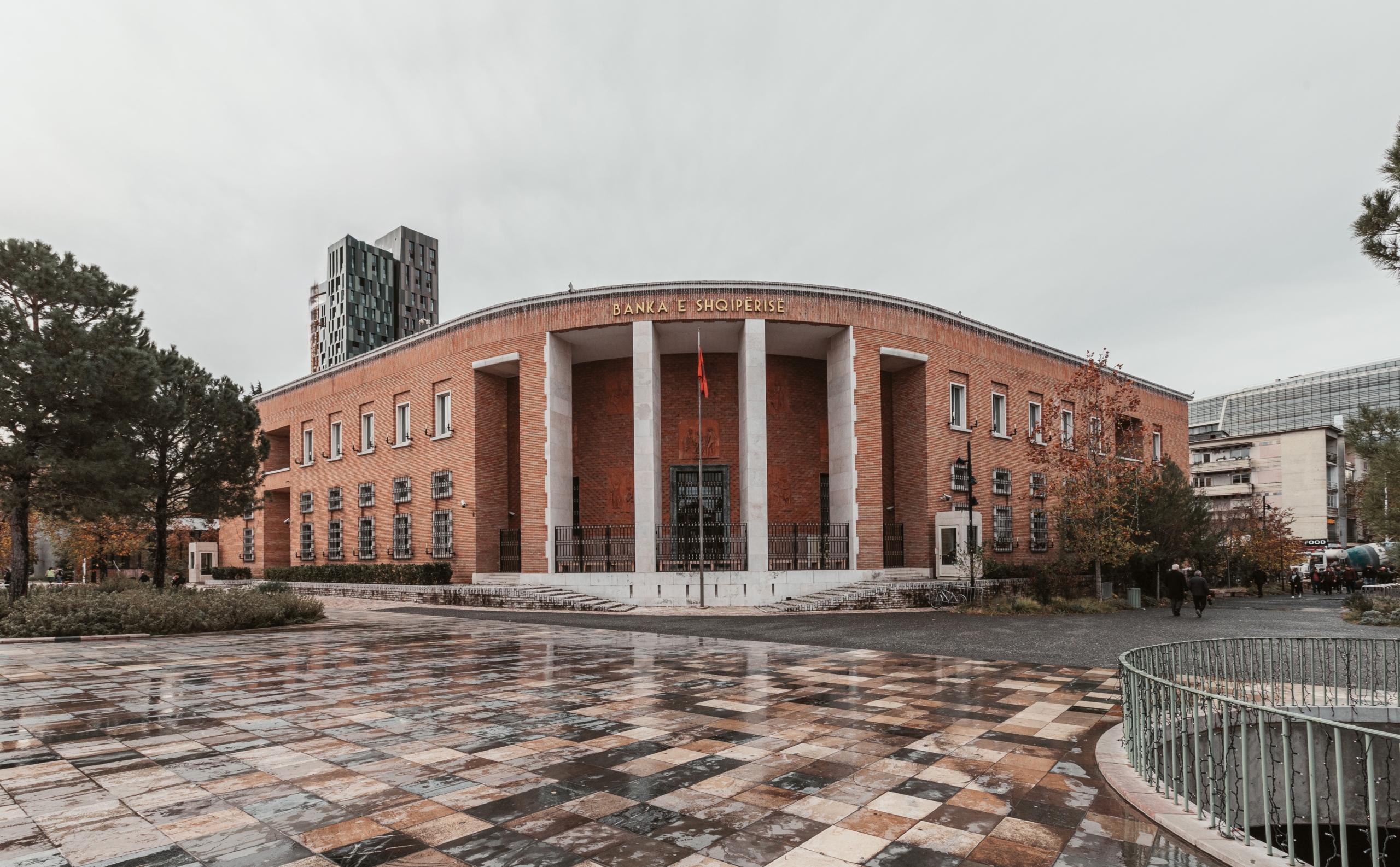Bank of Albania
Details
Updated on December 30, 2024 at 9:35 amInformation
- Author: Vittorio Morpurgo
- Year Built: 1938
Description
Built in 1938, the Bank of Albania is a striking example of Rationalist architecture in Tirana, reflecting the European architectural trends of the early 20th century. Designed by the Italian architect Vittorio Morpurgo, the building is an enduring symbol of modernity and functionality, blending aesthetic simplicity with structural sophistication.
Architectural Design
The design of the Bank of Albania exemplifies the Rationalist architectural style, characterized by clean lines, geometric precision, and a focus on practical functionality. Morpurgo’s blueprint divided the structure into two main parts:
- The Central Building: Dedicated to administrative functions.
- The Operational Section: Designed for day-to-day banking activities.
Exterior Features
- Volumes and Materials:
The building’s façade is clad in red brick, constructed using the opus latericium technique, which creates a distinctive texture. The simplicity of the design is balanced by the contrast between the deep red bricks and the crisp white frames of the windows, adding rhythm and visual interest to the structure. - Portico and Columns:
The main entrance features a grand portico supported by four columns and two pilasters, extending the full height of the façade. This entrance serves as a focal point, enhancing the building’s monumental character. - Sculptural Reliefs:
The walls of the portico are adorned with decorative reliefs created by the Italian sculptor Alfredo Biagini. These artistic elements add a layer of sophistication, blending functionality with artistry.
Interior Features
- Entrance Hall:
Inside the central entrance hall, the walls are decorated with intricate mosaic images, further showcasing the building’s attention to detail and commitment to artistic excellence. These mosaics reflect both the cultural heritage of the time and the architectural ambition of the project.
Additions and Modifications
In its contemporary form, the building has undergone expansions, particularly at the rear, to accommodate the growing needs of the institution. Despite these changes, the original design remains intact and continues to serve as a testament to Rationalist principles.
Cultural and Historical Significance
The Bank of Albania is more than just a financial institution; it is a landmark of Tirana’s urban landscape and a prominent example of interwar architectural trends in Albania. Its design captures the essence of Rationalism while incorporating decorative elements that elevate it beyond mere functionality.
The structure also serves as a reminder of Albania’s historical ties with Italy during the interwar period, reflecting the influence of Italian architects and designers on the country’s infrastructure.
Legacy
The Bank of Albania remains a functional and symbolic centerpiece in Tirana, reflecting the city’s architectural evolution and its connection to European design movements. Its timeless design and prominent location ensure its place as one of Albania’s most significant architectural and cultural landmarks.







